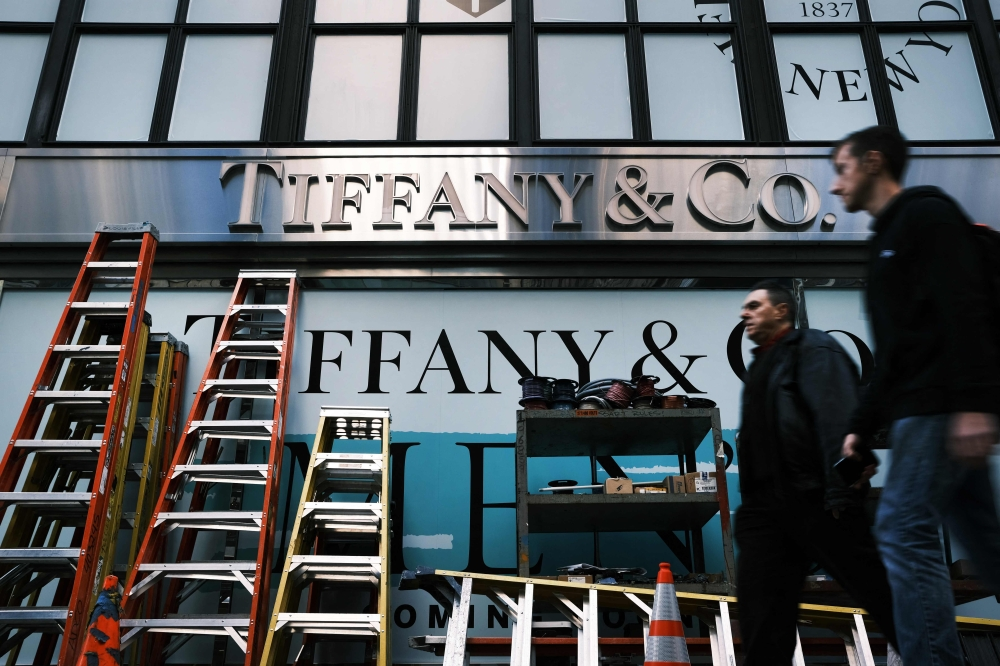The scaffolding and tarpaulins that have covered the Tiffany & Co. main jewelry store in New York for years have finally been removed in time for this week’s reopening.
The fabled Fifth Avenue location immortalized in the 1961 motion picture “Breakfast at Tiffany’s” has undergone a significant makeover, which the premium jeweler hopes would accelerate the brand’s growth under its new owner, the French luxury conglomerate LVMH.
Following its first comprehensive makeover since it debuted in 1940, the remodeled landmark store will be formally inaugurated on Wednesday. On Friday, it will be reopened to the public.
Anthony Ledru, chief executive officer of Tiffany, said the company wants to provide “a unique client experience” that combines “art, craftsmanship, heritage, and lifestyle.”
He wrote to AFP in an email that Tiffany wanted to honor its history while still being “relevant” to culture.
The goal of the company is to make Tiffany’s “approachable to all generations,” he stated.
Yeezy and Nike
Tiffany was established in New York in 1837 and is most known for the diamonds, silver jewelry, and engagement rings it sells in its trademark robin’s egg blue packaging.
The business, which has 14,000 employees and manages 300 retail locations globally, was purchased by LVMH in early 2021 for slightly under $16 billion.
Tiffany is on track to “exceed $1 billion in current operating income” this year, according to CEO Bernard Arnault, who made the announcement at LVMH’s annual financial presentation in January.
When we bought this company, we were just about halfway there,” he remarked.
Tiffany CEO Anthony Ledru has started a brand-refreshing initiative with the assistance of Alexandre Arnault, the CEO’s son. He has enlisted the cooperation of America’s hottest entertainment duo Jay-Z and Beyonce to promote Tiffany products and has launched a campaign with the provocative slogan “Not your mother’s Tiffany.”
Along with the redesign, the luxury brand has partnered with US footwear juggernaut Nike.
Tiffany was like a sleeping beauty, according to Erwan Rambourg, a luxury market expert at HSBC.
He told AFP that although the corporation has long relied on its “very strong reputation,” it was also “very conservative in its choices, very slow, and quite obsessed with the short term” to appease shareholders.
By putting less of a focus on products associated to marriage and silver jewelry and by raising some prices, the new management, motivated by “the spirit of conquest specific to Bernard Arnault,” repositioned the brand, according to him.
According to Luca Solca of Bernstein, it is more sensible for such firms to concentrate on high-end products. “When it was managed by American executives, there was a huge emphasis in communication on entry price, which is not a good approach” to pursue in luxury, he says.
In order to “recruit younger consumers,” the current management’s marketing and communication strategy is “more modern,” he claimed.
Unmistakable jewelry
The jeweler has also introduced a number of brand-new items, including the “Lock” line of bracelets and the “T by Tiffany” ring, more recently.
“It is quite difficult to put a big logo on a ring, a bracelet, or a pendant, but the shape of some so-called iconic products can, at 20 meters in a restaurant, identify that it is a Tiffany, Cartier, or Van Cleef jewel,” Rambourg added.
The company has also created a fresh strategy for its retail locations, choosing a “more feminine, warm, and welcoming” concept, he continued.
2019 saw the start of the New York shop restoration, which was continued after Tiffany was acquired by LVMH.
An individual close to Arnault claims that it is the largest investment of this kind ever made in the luxury industry.
The ten floors of the Manhattan store will have multiple exhibition spaces, a cafe run by French chef Daniel Boulud, and a VIP section in addition to updating the sales counters.
The store represented about 10% of Tiffany’s sales prior to the reconstruction, which allowed consumers to visit a temporary facility next door.
Ledru refused to specify a post-renovation sales goal but claimed the company had “raised the bar for business expectations” and expects “millions of visitors from all over the world” to enter the new Tiffany store annually.








